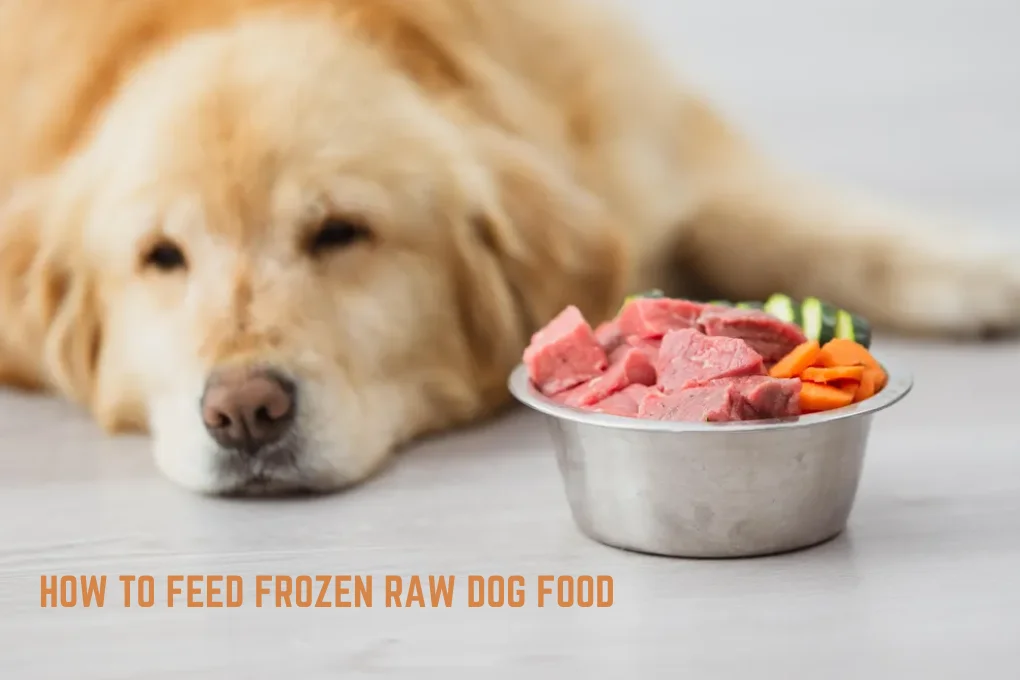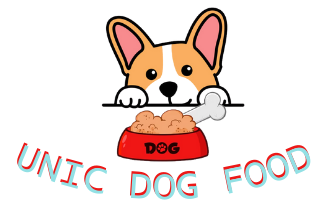Frozen raw dog food has gained popularity among pet owners seeking to provide a natural and nutritious diet for their furry companions.
Knowing how to feed frozen raw dog food is crucial for ensuring your pet’s health and well-being.
In recent years, the trend of feeding dogs frozen raw food has surged, driven by the desire to offer pets a diet resembling what they would consume in the wild.
Let’s dive into frozen raw dog food and explore how to feed it to your furry friend.
Benefits of Frozen Raw Dog Food
Nutritional Advantages
One of the primary benefits of feeding frozen raw dog food is its superior nutritional content. Raw meat, organs, and bones offer essential nutrients, promoting overall health and vitality in dogs.
Improved Digestion
One of the primary advantages of feeding your dog frozen raw food is its positive impact on digestion.
Unlike processed kibble, frozen raw dog food contains enzymes that aid digestion, potentially reducing digestive issues and promoting a healthier gut.
Raw diets are closer to what a dog’s ancestors would consume in the wild, promoting better absorption of nutrients and reducing the likelihood of digestive issues.
Healthier Coat
A shiny, lustrous coat is a sign of a healthy dog. The natural oils in raw food contribute to a glossy coat, making your pet feel better and look better.
The rich blend of omega-3 fatty acids in raw food contributes to a glossy and healthy coat, showcasing the external benefits of this diet.

Choosing the Right Frozen Raw Dog Food
Quality Ingredients
When selecting frozen raw dog food, prioritize quality ingredients. Look for options that include a variety of meats, vegetables, and essential nutrients to ensure a well-rounded diet for your furry friend.
Look for reputable brands that use high-quality, human-grade ingredients. Avoid fillers, artificial preservatives, and excessive grains.
Nutritional Content
Check the nutritional content of the frozen raw food to ensure it meets your dog’s specific needs. Consider factors like protein levels, fat content, and the presence of essential vitamins and minerals.
Avoiding Allergens
Consider your dog’s allergies when selecting frozen raw food. Consult with a vet to identify potential allergens and choose accordingly.
Consulting with a Vet
Before making any dietary changes, consult a veterinarian to ensure the raw food meets your dog’s specific nutritional needs.
How To Feed Frozen Raw Dog Food?
Feeding frozen raw dog food is a breeze! Here’s a simple 12 guide:
1. Start by thawing the frozen raw dog food in the refrigerator overnight.
2. Pair the food with your dog’s serving size once thawed.
3. Use stainless steel or glass bowls for feeding, avoiding plastic to prevent bacterial growth.
4. Serve the raw food at room temperature for better acceptance.
5. Avoid microwaving, as it can destroy essential nutrients in the raw diet.
6. Store unused portions in a sealed container in the fridge for the next meal.
7. Always wash your hands after handling raw dog food to prevent contamination.
8. Gradually introduce frozen raw food into your dog’s diet to allow their system to adjust.
9. Gradually transition your dog to the new diet to prevent digestive issues.
10. Monitor your dog’s weight and adjust portions accordingly.
11. Introduce variety by rotating protein sources for a balanced diet.
12. Keep feeding utensils and surfaces clean to prevent contamination.
Consult with your vet for personalized feeding recommendations.
How Much Frozen Raw Food Should I Feed My Dog?
Start with 2-3% of your dog’s body weight. Adjust based on activity level and metabolism. Monitor weight and adjust accordingly.
Divide the daily amount into meals. Consider breed, age, and health conditions.
Take a 50-pound dog as an example—they’d require ½ to ¾ pound of raw dog food per meal.
High-energy, working dogs might need more, while laid-back “couch-potato” dogs may require less. Adjust to your pup’s unique needs and activity level.
Consult your vet for a precise recommendation.
Do You Defrost Frozen Raw Dog Food?
I always defrost frozen raw dog food before serving. It’s essential for their safety and digestion. Thaw it in the refrigerator to maintain its nutritional integrity.
Avoid microwaving as it can create uneven spots, risking nutrient loss. Plan and defrost overnight.
Always use separate utensils to prevent cross-contamination. Your pup’s health is worth the extra effort.
FAQs
Can I Mix Frozen Raw Food with Kibble?
Yes, you can mix frozen raw dog food with kibble, but monitor your dog’s digestion and adjust the ratio based on their tolerance.
How Do I Introduce Raw Bones?
Introduce raw bones gradually to prevent choking or digestive issues. Monitor your dog during chewing.
Is Frozen Raw Dog Food Safe for Puppies?
Yes, frozen raw dog food can be safe for puppies, but consult your vet for appropriate portion sizes and nutritional requirements.
Can I Make My Own Frozen Raw Dog Food?
While possible, it requires careful consideration of nutritional balance. Consult with a veterinary nutritionist for guidance.
What if My Dog Doesn’t Like Raw Food?
Some dogs may take time to adjust. Experiment with different proteins and textures, or consult a vet for advice.
Are There Risks of Nutrient Deficiency?
A well-balanced variety of proteins helps minimize the risk. Regular vet check-ups can identify and address any potential deficiencies.
Conclusion
Feeding frozen raw dog food can be a beneficial choice for pet owners seeking to provide a natural and nutritious diet for their furry companions.
With careful consideration of quality, safety, and individual needs, switching to raw feeding can result in your dog’s healthier and happier life.
- Homemade Bone Broth For Dog Recipe - December 17, 2025
- Can You Cook Raw Dog Food? - September 10, 2025
- Homemade No-Bake Dog Treat Recipes Your Pup Will Love - September 6, 2025
